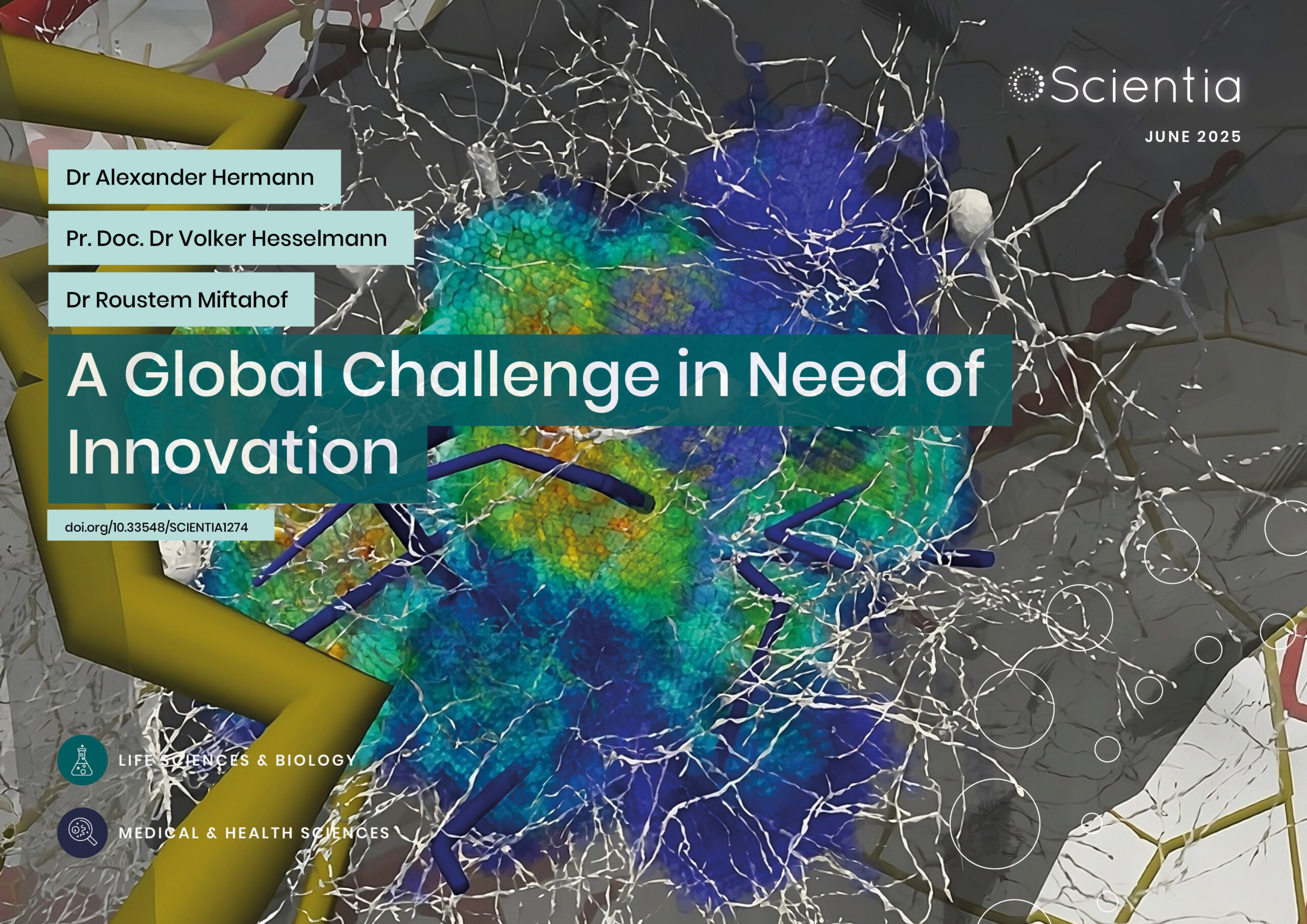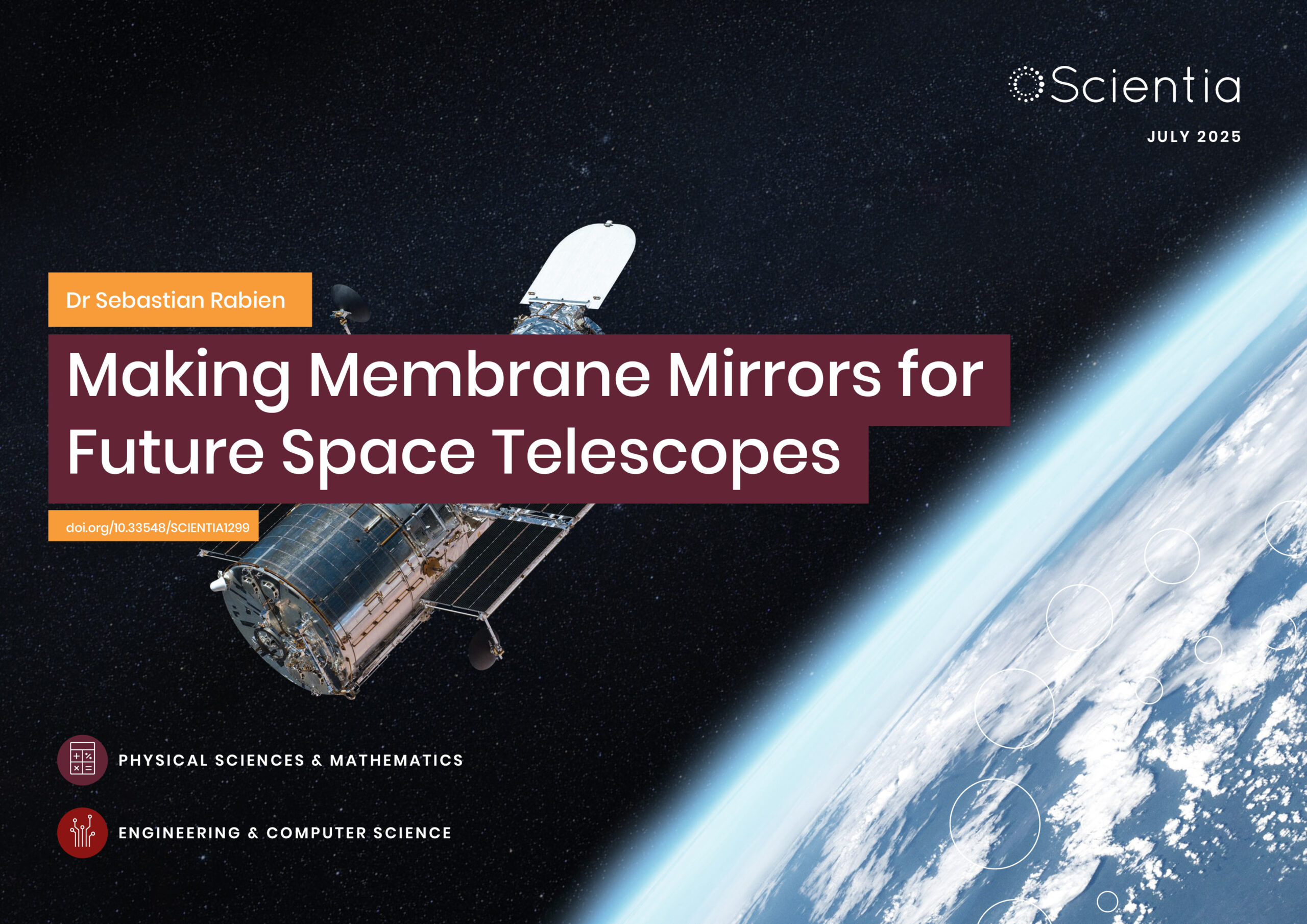Professor Kim Dale | Dr Hedda Meijer – The Role of Notch Signalling within the Molecular Clock in the Early Development of the Skeleton
Cells possess the ability to interact with one another through complex signalling pathways. Different signals regulate how cells differentiate, undergoing modifications that ultimately allow them to adopt different cell fates and perform specific functions. The laboratory of Professor Kim Dale from the University of Dundee, Scotland, has made seminal contributions to our understanding of how the Notch signalling pathway controls the formation of tissues and organs in the earliest stages of development. Their important research has unveiled new insights into the molecular basis of Notch signalling in the context of normal development which will further our understanding of the molecular basis of developmental disorders and a multitude of diseases correlated with aberrant Notch signalling.
The Formation of Bone Precursors in Vertebrate Embryos
In response to the appropriate signal, stem cells differentiate into highly specialised daughter cells during development in order to construct all of the different tissues and organs of the vertebrate body plan. Notch and other signalling pathways regulate in fine detail the fate of stem cells in the embryo. For example, one particular stem cell called a neuromesodermal stem cell, responds to different cell signalling interactions, to either generate daughters cells that remain as stem cells, or to generate daughters that will go on to lay the foundations of neural or skeletal development.
During embryonic skeletal development, segments of tissue are formed that will eventually give rise to the bones of the skeleton; these segments are referred to as somites. The process of somite formation is known as somitogenesis. The team in Professor Kim Dale’s laboratory at the University of Dundee are interested in the investigation of the factors that regulate somitogenesis. Professor Dale’s laboratory has published several pioneering studies that show that the Notch signalling pathway plays an essential role in the process of somitogenesis.
All vertebrate species share a similar segmented ‘body plan’ that is established very early in the formation of the embryo. The process of somitogenesis is highly evolutionarily conserved and has been studied since the early 1900s. During this process of segmentation, a repeated pattern of somites is arranged on either side of the posterior neural tube. These segments are the precursors of the vertebrae, ribs and associated skeletal muscle. Interestingly, the number of somites formed are different for different species.
Somitogenesis is a fine example of tight spatio-temporal regulation, resulting in the formation of three-dimensional structures in the developing embryo. Somites are formed progressively with a strict species-specific periodicity that is linked to a maturation wavefront that proceeds in an anterior to posterior direction. The advent of molecular biology has allowed researchers to establish that the periodic activation of Notch, in turn, activates several genes that coordinate the timing of the formation of somites.
Despite being so important for somitogenesis and other regulatory mechanisms, the Notch pathway is relatively simple, and its main features are strikingly similar across different species. Notch is divided into two domains, the intracellular domain, facing the inside of the cell, and the extracellular domain, which interacts with everything that surrounds the cell on the outside.
The Notch signalling pathway can be simplified as an interaction between the ligands of a signal-sending cell and the receptors of a signal-receiving cell. Upon ligand-receptor interaction, a molecular ‘switch’ is activated that eventually liberates the intracellular domain of Notch (NICD). NICD, once free to move towards the nucleus, interacts with the genetic material of the cell, activating several specific genes. The activated genes are ultimately responsible for regulating the stem cell response to the Notch ligand in relation to their survival, growth and the role they take in forming tissues with specific functions.
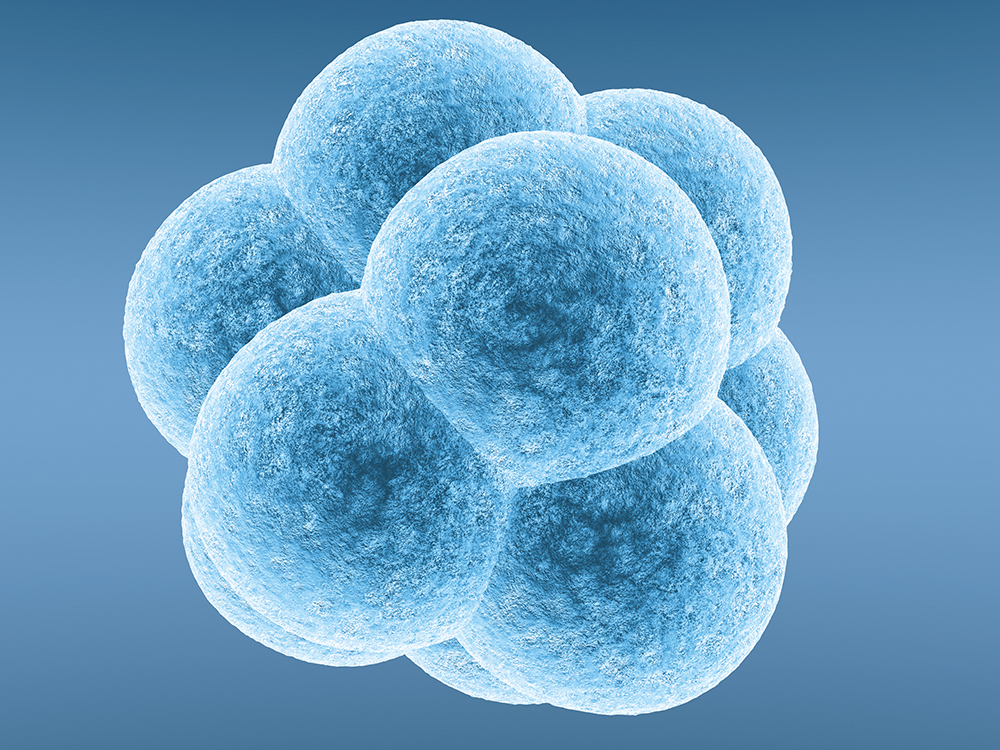
A Finely Regulated Molecular Clock
Somitogenesis happens in a progressive and tightly regulated fashion. The genes responsible for the exact pace of the segmentation progress can be switched on and off in an oscillatory pattern. This molecular oscillator is known as the segmentation clock. This clock can be visualised through periodic waves of gene expression that occur in the developing embryo with exactly the same frequency observed for somite formation.
Professor Dale contributed to the first pioneering studies that led to the discovery of the segmentation clock. Those studies, conducted in chick embryos, proved that the over-expression of a gene known as lunatic fringe, which encodes for a protein that modifies Notch activity, leads to defects in segmentation. Professor Dale and her collaborators, together with other leading laboratories across the world, have since published several studies confirming that the genes making up the ‘clock’ belong to three main signalling pathways, Notch being one of them.
Professor Dale and her team used a computational model to show that the influence of Notch signalling on regulating the pace of the segmentation clock depends on the stability of its intracellular domain, NICD. According to their model, when the levels of NICD are high, the pace of the segmentation clock slows down. They published a study in 2015 to back up this model with experimental data. The team at Professor Dale’s laboratory have used chick and mouse embryos as a model for human segmentation as the process is highly conserved both at the tissue and the molecular level. They showed that when chicken embryos were treated with drugs that interfered with the degradation of NICD, this slowed the segmentation clock as judged by the formation of fewer but larger somites in a given length of time. Critically, in the same study, the authors showed that the pace of the clock could be reversed back to a faster pace by reducing NICD levels again through treating the chicken embryos with drugs that reduced the production of intracellular levels of NICD.
A Model System for Congenital Scoliosis
Congenital vertebral malformations occur in around 1 every 1,000 humans. In the early stages of somitogenesis, the bone precursor segments are laid down along the axis that runs from the head to the tail of the embryo. As described above, this process is highly conserved across all species of vertebrates. When somitogenesis fails it can lead to several developmental disorders.
Congenital scoliosis is characterised by several malformations of the spine, including defects in the structure of the vertebrae. For many forms of congenital scoliosis, we do not understand the aetiology. However, one particular condition, known as spondylocostal dysostosis (SCD), is linked to mutations in genes belonging to the Notch pathway, highlighting the importance of this pathway to skeletal formation. Moreover, Professor Dale’s laboratory has shown that the absence of Notch in mice results in the complete lack of somite formation during segmentation.
The team at Professor Dale’s laboratory have used chick and mouse embryos, as well as human-induced pluripotent stem cells, to delve further into the mechanism by which Notch influences this process. They have tested and confirmed their hypothesis that the misregulation of the degradation of the NICD molecule leads to the impaired development of the skeleton by changing the timing of this process, which ultimately will change the number of segments formed.
Going forward Professor Dale’s laboratory hopes to build on these findings by manipulating the Notch signalling pathway in cultured chick and mouse embryos and human pluripotent (immature) stem cells to eventually establish a model system for congenital scoliosis. As well as presenting vertebral abnormalities, SCD is characterised by a shortened torso and misaligned ribs. Individuals that are severely affected by SCD may develop life-threatening complications in lung function.
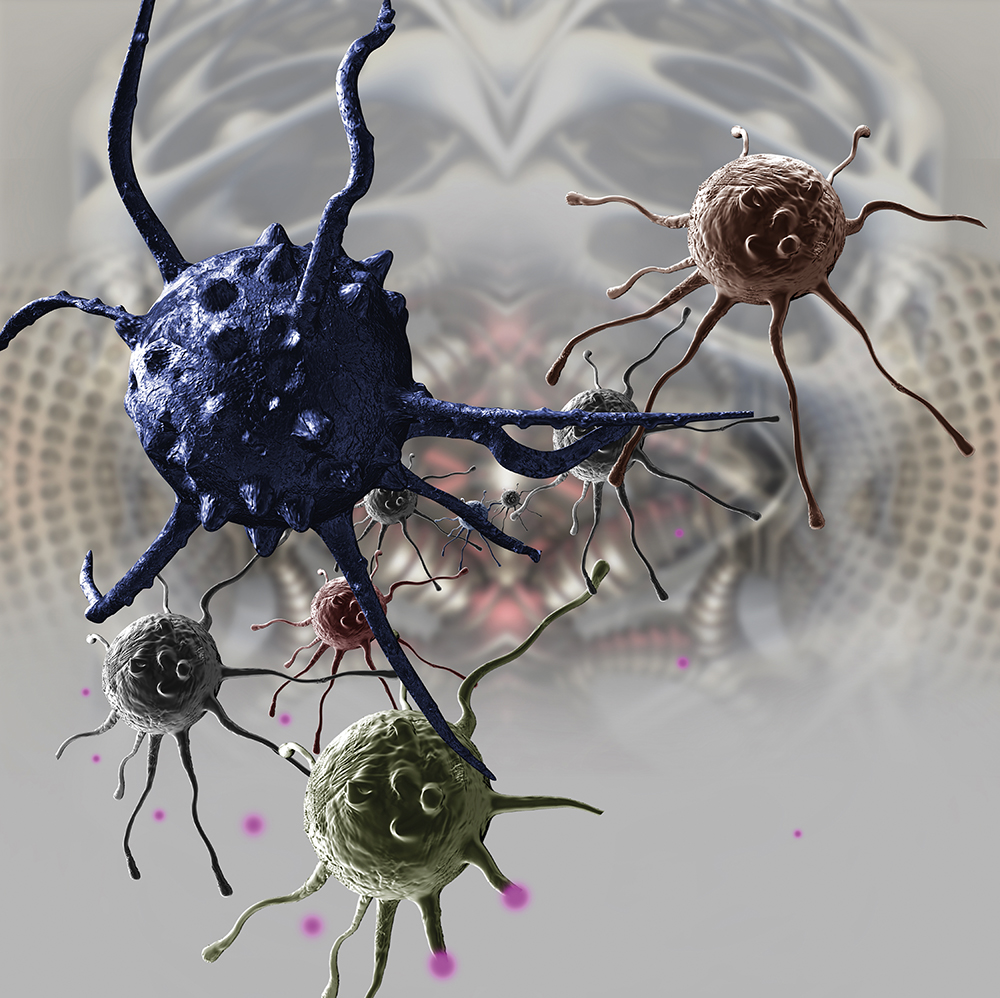
The Role of Notch in Tumorigenesis and Cancer
The cell cycle is a tightly regulated mechanism responsible for cell growth and division. The cell cycle can be understood as a series of interactions with signalling molecules that the cell goes through to copy all its genetic material and eventually divide into two genetically identical daughter cells. When the factors that control the tightly regulated progression through this process malfunction, cells start to divide uncontrollably. Cancer can be one consequence of this uncontrolled cell division that leads to the unregulated growth of tissues known as tumours. Understanding the mechanisms that control cell division is key to the development of effective cancer treatments.
In a paper published in 2019, Professor Dale’s laboratory demonstrated that the levels of NICD vary in a manner that is dependent on the presence of proteins involved in regulation of the cell cycle. They showed that the inhibition of CDK-1 and CDK-2, two important cell cycle enzymes, leads to an increase in the levels of NICD, causing a delay in the mouse somitogenesis clock and somite formation. The researchers supported their findings by developing a mathematical model that showed that their experimental observations, made in the mouse embryo and in different cell lines, could be explained in a theoretical framework linking the cell cycle to NICD degradation.
These exciting results highlight the fact that current cancer treatments that target cell cycle progression, need perhaps to be re-evaluated for the impact they may also have on Notch signalling. Indeed, certain cancer patients that develop immunity over time to cancer treatments that rely on cell cycle inhibitors have also exhibited elevated levels of Notch signalling. Thus, these findings may further pave the way towards the development of more effective cancer treatments that target both cell cycle and Notch signalling.
Future Directions
Dr Meijer, one of Professor Dale’s team, together with their collaborators are currently trying to identify the missing pieces of the puzzle that makes up the molecular mechanism behind the clock gene oscillations observed during somitogenesis. They aim to achieve this by using molecular probes that will allow them to fully map the complex network of Notch interacting partners and the exact location of key phosphorylation sites on NICD. Once those sites are identified, the team will further investigate how phosphorylation directly affects NICD in vivo while at the same time trying to quantify the impact of altering NICD levels on tissue development.
An exciting and ambitious project that Professor Dale’s laboratory is currently working on is to use human stem cells with a fluorescent marker that allows the visualisation of Notch target genes revealing their oscillatory pattern in real time. This approach allows researchers to ‘see’ the genes that activate the segmentation clock in action, but it also provides an invaluable tool to manipulate the system and thereby identify the currently unknown molecular mechanisms behind this potent oscillatory signalling gene network which will ultimately inform our understanding of disease systems, including several types of cancer, that are linked to Notch. To this end, Professor Dale, Dr Meijer and the team will join forces with a network of high calibre international collaborators who are experts in the field of Notch signalling.
Reference
https://doi.org/10.33548/SCIENTIA550
Meet the researchers
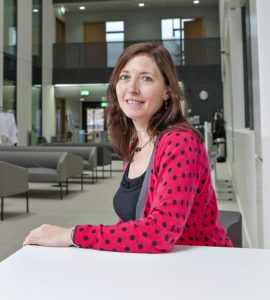
Professor Kim Dale
Division of Cell and Developmental Biology
University of Dundee
Dundee
United Kingdom
Professor Kim Dale obtained her PhD in developmental neurobiology from the National Institute for Medical Research in London in 1997. Her work on Notch signalling has been instrumental to our understanding of the clock and wavefront model for somite formation and she has been hugely influential in both the Notch signalling and developmental biology fields. Professor Dale started working on the Notch signalling pathway as a postdoctoral researcher in the laboratory of Dr Olivier Pourquie in Marseille, France. The pioneering work of that laboratory has been recognised as one of the milestones in developmental biology of the 20th century by Nature Magazine. Professor Dale established her own group at the University of Dundee as a Royal Society University Research Fellow in 2005. She is now Associate Dean International for the School of Life Sciences at the University of Dundee, where she is also a Professor of Molecular Developmental Biology.
CONTACT
E: j.k.dale@dundee.ac.uk
W: https://www.lifesci.dundee.ac.uk/people/kim-dale; https://www.dundee.ac.uk/people/kim-dale
Twitter: @KimDale_lab
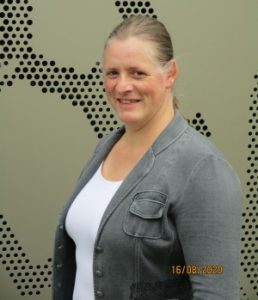
Dr Hedda Meijer
Division of Cell and Developmental Biology
University of Dundee
Dundee
United Kingdom
Dr Hedda Meijer received her PhD in embryology and molecular biology from Utrecht University in the Netherlands, in 2001. Her research interests revolve around the field of embryology and RNA biology. The main focus of her previous research was on the role of translational control, the regulation of poly(A) tail length and RNA stability during oogenesis and embryonic development. Dr Meijer joined the laboratory of Professor Kim Dale in 2019 as a Postdoctoral Fellow and is currently investigating the regulation of Notch signalling in the context of the vertebrate segmentation clock. Before joining the University of Dundee, she held several research positions at the Universities of Nottingham and Cambridge in the field of RNA biology.
CONTACT
E: HMeijer001@dundee.ac.uk
KEY COLLABORATORS
Professor Dario Alessi, University of Dundee
Professor Lucio Miele, Louisiana State University
Professor Palle Serup, University of Copenhagen
Dr Philip Murray, University of Dundee
Professor Val Wilson, University of Edinburgh
Professor Sally Lowell, University of Edinburgh
FUNDING
Medical Research Council
FURTHER READING
FA Carrieri, P Murray, D Ditsova, MA Ferris, P Davies, JK Dale, CDK1 and CDK2 regulate phosphorylation-dependent NICD1 turnover and the periodicity of the segmentation clock, EMBO Reports, 2019, e46436, doi:10.15252/embr.201846436.
I Mastromina, L Verrier, KG Storey, JK Dale, MYC Activity is Required for Maintenance of the Neuromesodermal Progenitor Signalling Network and for Correct Timing of Segmentation Clock Gene Oscillations, Development, 2018, 145, doi:10.1242/dev.161091.
G Wiedermann, R Bone, J Clara, M Bjorklund, P Murray, JK Dale, A balance of positive and negative regulators determines the pace of the segmentation clock, eLife, 2015, e05842, doi:10.7554/eLife.05842.
JK Dale, M Maroto, ML Dequeant, P Malapert, M McGrew, O Pourquie, Periodic Notch Inhibition by Lunatic Fringe Underlies the Chick Segmentation Clock, Nature, 2003, 421, doi:10.1038/nature01244.

Want to republish our articles?
We encourage all formats of sharing and republishing of our articles. Whether you want to host on your website, publication or blog, we welcome this. Find out more
Creative Commons Licence
(CC BY 4.0)
This work is licensed under a Creative Commons Attribution 4.0 International License. 
What does this mean?
Share: You can copy and redistribute the material in any medium or format
Adapt: You can change, and build upon the material for any purpose, even commercially.
Credit: You must give appropriate credit, provide a link to the license, and indicate if changes were made.
More articles you may like
Stroke: A Global Challenge in Need of Innovation
Stroke is the third leading cause of both death and disability worldwide, but unfortunately, current diagnostic tools are unsatisfactory. Dr Roustem Miftahof and Dr Alexander Hermann at Advanced Biosimulation Technologies LLC, USA, are overcoming the limitations of existing diagnostic tools with the development of the Neuro-Glia-Vascular Unit Engine. This transformative tool for clinicians and biomedical researchers provides patient-specific health insights with the potential to improve care not only in stroke but across a range of neurological disorders.
Dr Shigetaka Hayano | The Rubber Revolution: Cracking the Code for Tire Recycling!
Traditionally, rubber waste was nearly impossible to recycle due to crosslinked sulphur bonds. But a team of researchers led by Dr Shigetaka Hayano from Zeon Corporation, in Japan, have achieved a groundbreaking feat in rubber recycling. Using mild conditions for the reaction, scientists have overcome the unfavourable cross-linked structure and have achieved recovery of rubber’s original monomers. This process restores cyclopentene monomers with 90% efficiency, allowing old tires and industrial rubber waste to be chemically recycled into high quality materials. If scaled up, this innovation could revolutionise waste management, reduce environmental pollution, and enable a circular economy for rubber production.
Prof Doron Lancet | Reproducing lipid micelles permit early Darwinian evolution
The origin of life has puzzled science and philosophy for thousands of years. While the prevailing scientific narrative is of an ‘RNA world’ or ‘polymers first’ approach, Prof Doron Lancet’s group of the Weizmann Institute of Science in Rehovot, Israel, present an alternative, describing a ‘lipid world’ scenario as a plausible origin for life, in which lipid micelles (simpler structures than cell-like vesicles) could have been nanoscopic protocell precursors. Core to the theory is that these micelles could exhibit catalysis and compositional self-reproduction, passing information through the mixture of their lipid components rather than through a genetic sequence.
Dr Sebastian Rabien | Making Membrane Mirrors for Future Space Telescopes
Mirrors play a key role in space telescopes, but to keep increasing the scale of this technology, mirrors need to be light and compact, so they can be transported in spacecraft, but also able to be adaptively corrected and controlled to ensure their accuracy. Dr Rabien and his colleagues from the Max Planck Institute for Extraterrestrial Physics, in Germany, have developed a technique to make extremely thin and lightweight mirrors, which can then be controlled with adaptive optics, making them a potential solution for larger space telescopes.

